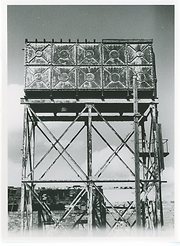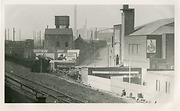 Hartlepool Sports & Leisure
Hartlepool Sports & Leisure
- Cinemas, Theatres & Dance Halls
- Musicians & Bands
- At the Seaside
- Parks & Gardens
- Caravans & Camping
- Sport
 Hartlepool Transport
Hartlepool Transport
- Airfields & Aircraft
- Railways
- Buses & Commercial Vehicles
- Cars & Motorbikes
- The Ferry
- Horse drawn vehicles
 A Potted History Of Hartlepool
A Potted History Of Hartlepool
- Unidentified images
- Sources of information
- Archaeology & Ancient History
- Local Government
- Printed Notices & Papers
- Aerial Photographs
- Events, Visitors & VIPs
 Hartlepool Trade & Industry
Hartlepool Trade & Industry
- Trade Fairs
- Local businesses
- Iron & Steel
- Shops & Shopping
- Fishing industry
- Farming & Rural Landscape
- Pubs, Clubs & Hotels
 Hartlepool Health & Education
Hartlepool Health & Education
- Schools & Colleges
- Hospitals & Workhouses
- Public Health & Utilities
- Ambulance Service
- Police Services
- Fire Services
 Hartlepool People
Hartlepool People
 Hartlepool Places
Hartlepool Places
 Hartlepool at War
Hartlepool at War
 Hartlepool Ships & Shipping
Hartlepool Ships & Shipping

Throston Engine House
Details about Throston Engine House
Throston Engine House.
The old Throston Engine House, in Cemetery Road, Hartlepool dates back to 1830. The hauling engine - which was steam powered - used to draw coal wagons up a railway incline to top of the former coal staithes. A dispute between railway companies over use of these coal-shipping facilities was major factor leading to founding of new town of West Hartlepool in 1840's when West Harbour was built in order to bypass the use of the engine house. The Throston Engine House is one of many Grade II listed buildings in old Hartlepool.
In the mid-19th century, Hartlepool’s two ports shipped three times more goods than the other North Eastern ports combined (Newcastle, North and South Shields Sunderland, Stockton and Middlesbrough). Throston Engine House was the catalyst for the creation of the second port at West Hartlepool.
Throston was a static winding-engine that hauled coal up to the staiths at Hartlepool’s Victoria Dock. At the time, Victoria Dock shipped 27% of the North East’s coal. All exports had to travel via Throston Engine House at an additional cost of 3 pence per tonne.
The Stockton to Hartlepool Railway Company became increasingly frustrated at the costs and restrictions of accessing Hartlepool’s Victoria Dock and purchased land to the southwest where they built West Hartlepool Harbour. This improved access from the collieries to the sea, reduced costs and the Engine House became redundant.
Throston is therefore fundamental to the story of Hartlepool’s role in international trade and the establishment of the town in its current form.
In the mid-19th century, Hartlepool’s two ports shipped three times more goods than the other North Eastern ports combined (Newcastle, North and South Shields Sunderland, Stockton and Middlesbrough). Throston Engine House was the catalyst for the creation of the second port at West Hartlepool.
Throston was a static winding-engine that hauled coal up to the staiths at Hartlepool’s Victoria Dock. At the time, Victoria Dock shipped 27% of the North East’s coal. All exports had to travel via Throston Engine House at an additional cost of 3 pence per tonne.
The Stockton to Hartlepool Railway Company became increasingly frustrated at the costs and restrictions of accessing Hartlepool’s Victoria Dock and purchased land to the southwest where they built West Hartlepool Harbour. This improved access from the collieries to the sea, reduced costs and the Engine House became redundant.
Throston is therefore fundamental to the story of Hartlepool’s role in international trade and the establishment of the town in its current form.
In the mid-19th century, Hartlepool’s two ports shipped three times more goods than the other North Eastern ports combined (Newcastle, North and South Shields Sunderland, Stockton and Middlesbrough). Throston Engine House was the catalyst for the creation of the second port at West Hartlepool.
Throston was a static winding-engine that hauled coal up to the staiths at Hartlepool’s Victoria Dock. At the time, Victoria Dock shipped 27% of the North East’s coal. All exports had to travel via Throston Engine House at an
In the mid-19th century, Hartlepool’s two ports shipped three times more goods than the other North Eastern ports combined (Newcastle, North and South Shields Sunderland, Stockton and Middlesbrough). Throston Engine House was the catalyst for the creation of the second port at West Hartlepool.
Throston was a static winding-engine that hauled coal up to the staiths at Hartlepool’s Victoria Dock. At the time, Victoria Dock shipped 27% of the North East’s coal. All exports had to travel via Throston Engine House at an
In the mid-19th century, Hartlepool’s two ports shipped three times more goods than the other North Eastern ports combined (Newcastle, North and South Shields Sunderland, Stockton and Middlesbrough). Throston Engine House was the catalyst for the creation of the second port at West Hartlepool.
Throston was a static winding-engine that hauled coal up to the staiths at Hartlepool’s Victoria Dock. At the time, Victoria Dock shipped 27% of the North East’s coal. All exports had to travel via Throston Engine House at an
In the mid-19th century, Hartlepool’s two ports shipped three times more goods than the other North Eastern ports combined (Newcastle, North and South Shields Sunderland, Stockton and Middlesbrough). Throston Engine House was the catalyst for the creation of the second port at West Hartlepool.
Throston was a static winding-engine that hauled coal up to the staiths at Hartlepool’s Victoria Dock. At the time, Victoria Dock shipped 27% of the North East’s coal. All exports had to travel via Throston Engine House at an
In the mid-19th century, Hartlepool’s two ports shipped three times more goods than the other North Eastern ports combined (Newcastle, North and South Shields Sunderland, Stockton and Middlesbrough). Throston Engine House was the catalyst for the creation of the second port at West Hartlepool.
Throston was a static winding-engine that hauled coal up to the staiths at Hartlepool’s Victoria Dock. At the time, Victoria Dock shipped 27% of the North East’s coal. All exports had to travel via Throston Engine House at an
In the mid-19th century, Hartlepool’s two ports shipped three times more goods than the other North Eastern ports combined (Newcastle, North and South Shields Sunderland, Stockton and Middlesbrough). Throston Engine House was the catalyst for the creation of the second port at West Hartlepool.
Throston was a static winding-engine that hauled coal up to the staiths at Hartlepool’s Victoria Dock. At the time, Victoria Dock shipped 27% of the North East’s coal. All exports had to travel via Throston Engine House at an
Throston was a static winding-engine that hauled coal up to the staiths at Hartlepool’s Victoria Dock. At the time, Victoria Dock shipped 27% of the North East’s coal. All exports had to travel via Throston Engine House at an additional cost of 3 pence per tonne.
- See more at: http://www.100placesne.co.uk/places/view/86#sthash.Tad12Zle.dpuf
Throston was a static winding-engine that hauled coal up to the staiths at Hartlepool’s Victoria Dock. At the time, Victoria Dock shipped 27% of the North East’s coal. All exports had to travel via Throston Engine House at an additional cost of 3 pence per tonne.
- See more at: http://www.100placesne.co.uk/places/view/86#sthash.Tad12Zle.dpuf
Throston was a static winding-engine that hauled coal up to the staiths at Hartlepool’s Victoria Dock. At the time, Victoria Dock shipped 27% of the North East’s coal. All exports had to travel via Throston Engine House at an additional cost of 3 pence per tonne.
- See more at: http://www.100placesne.co.uk/places/view/86#sthash.Tad12Zle.dpuf
Location
Related items :
 Throston Engine House
Throston Engine House
 Part of the Library collection collection
Part of the Library collection collectionDated 1965
Dated 1965, the image shows Throston Engine House hiding behind the hoarding showing two well known ale adverts (Vaux of Sunderland of course closed some years ago)
To the left is Throston Bridge which was well known as 'the border' into Hartlepool and was demolished in 1973. To the right is Old Cemetery Road which was, until 1967 and amalagamation of Hartlepool and West, known as Clifton Street.
HHT+N 91
More detail » Throston Engine House (2)
Throston Engine House (2)
 Donated by Hartlepool Museum Service
Donated by Hartlepool Museum ServiceThe water tower at Throston Engine House.
More detail » Throston Engine House (3)
Throston Engine House (3)
 Donated by Hartlepool Museum Service
Donated by Hartlepool Museum ServiceView from embankment above Northgate. From left ot right: Throston bridge, Throston Engine House, Clifton Street (Old Cemetery road) with Steetley in distance, the unfinished "Comet" cinema. Garage in foreground was built 1961.
More detail »



